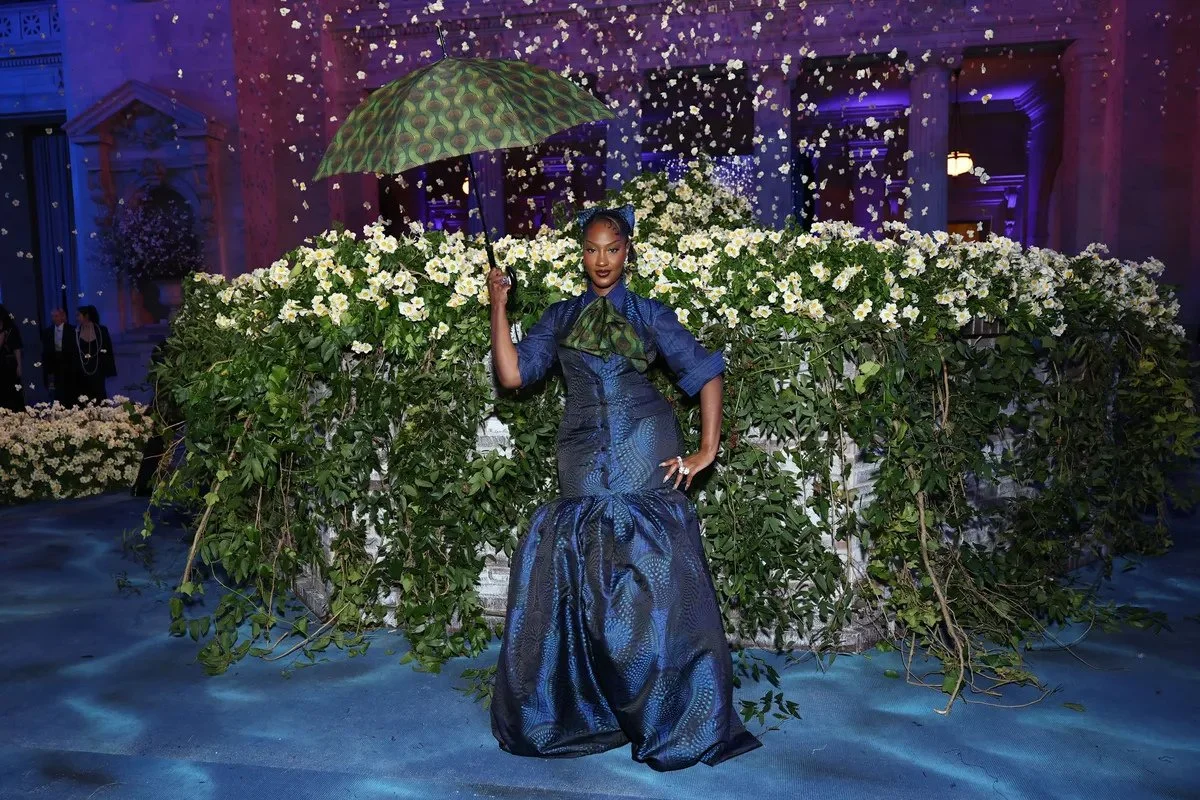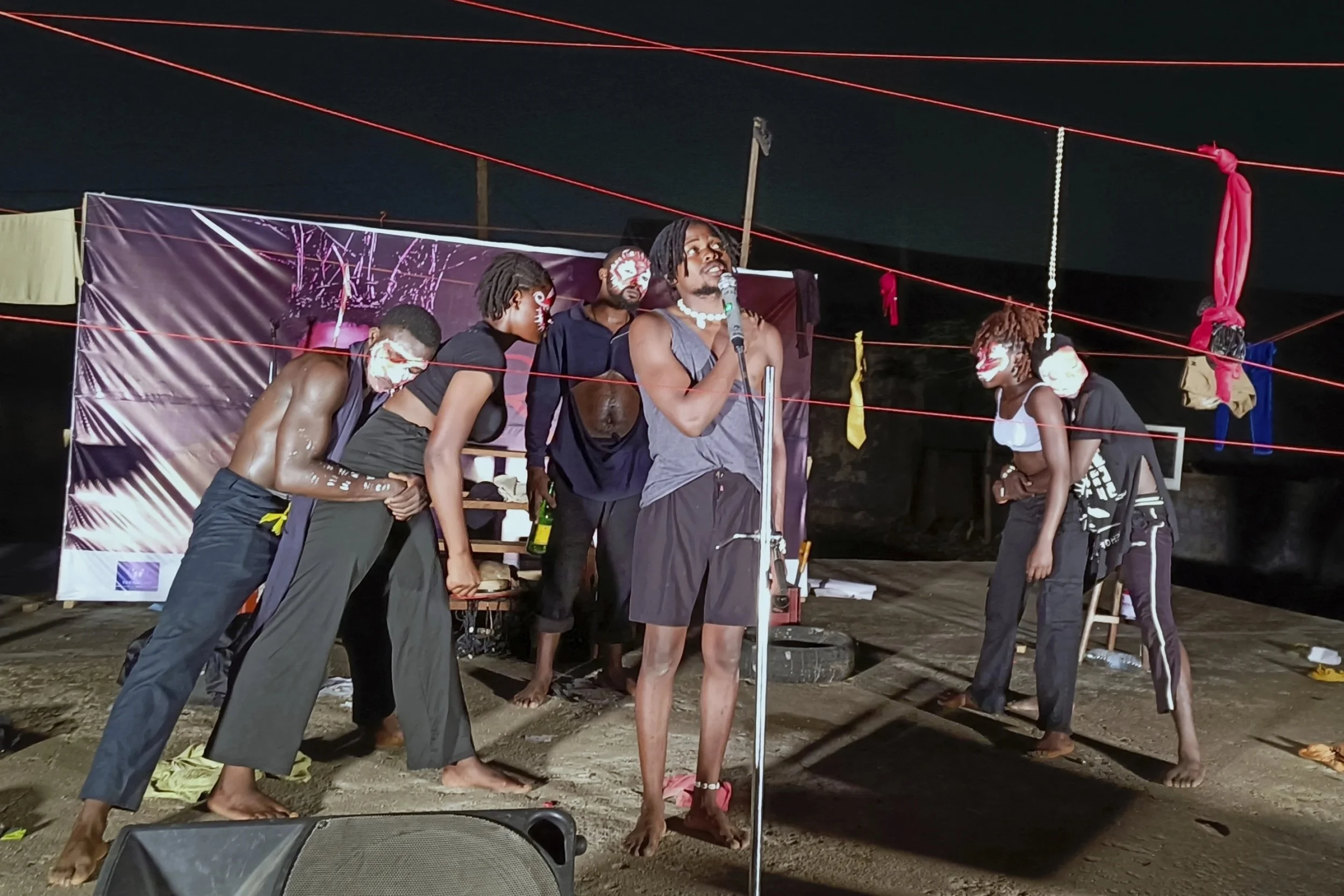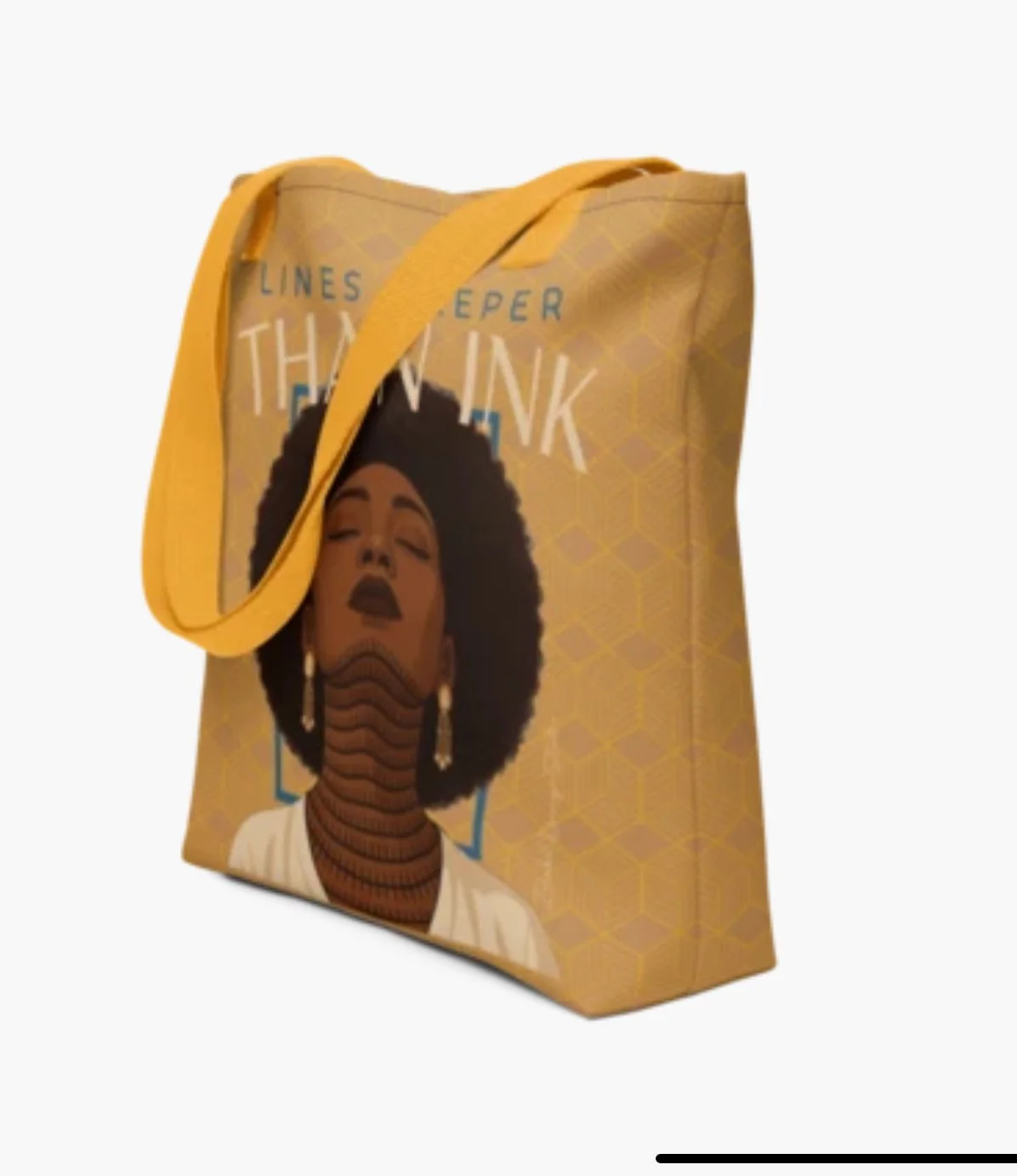Zelaki Newsletter | May 2025, Edition II
Bold Marks, Global Moves
In this edition of the Zelaki Newsletter, we highlight the bold and brilliant ways African creatives are shaping global conversations. From a record-breaking artwork in Nigeria to spoken word as resistance in Cameroon, each story reveals how art becomes a tool for change. We explore the latest in contemporary African art, witness a historic Met Gala moment for African designers, and end with a behind the design look at our new tote inspired by Ethiopian tattoo traditions. Each feature reflects a deep connection to heritage, identity, and imagination.
News from Africa And Beyond
African Designers Take Center Stage at the 2025 Met Gala
The 2025 Met Gala marked a historic moment as African designers and cultural narratives took center stage at one of fashion's most prestigious events. For the first time, the gala featured African Fashion International (AFI) as a top-billed sponsor, alongside Instagram and the Tyler Perry Foundation. This collaboration underscored the global significance of African fashion and its influence on contemporary style.
Dr. Precious Moloi-Motsepe, founder of AFI, emphasized the importance of this milestone, stating, "Black dandyism is a cultural phenomenon that is alive on the African continent—in Congo, on the streets of Nairobi, in Lagos, in Johannesburg, in Cape Town." She highlighted the Met Gala as more than an event, describing it as "a cultural institution that influences how we view fashion." For AFI, the gala presented an opportunity to showcase the depth, creativity, and global significance of African fashion, challenging outdated perceptions of African identity in the fashion world.
This year’s gala theme, “Superfine: Tailoring Black Style,” honored the enduring legacy of Black men’s fashion as a form of self-definition and resistance. It also provided an ideal frame through which African designers could highlight the sharp tailoring, heritage motifs, and contemporary craftsmanship that distinguish their work.
Several standout designers represented the continent with flair. South African label Imprint ZA, known for its avant-garde storytelling through textile, dressed multiple attendees in designs that fused traditional patterns with futuristic silhouettes. Nigeria’s Pepper Row brought a sustainable edge to the red carpet with their eco-conscious, vibrantly colored gowns. Ghanaian-British designer Ozwald Boateng returned to the gala with sharply tailored suits that reimagined classic menswear through an Afrocentric lens. Celebrities like Michaela Coel and Burna Boy wore pieces by African designers, helping to amplify their reach on a global stage and showcasing the artistry rooted in African aesthetics.
More than half a dozen African designers made their debut at the Met Gala, crafting outfits not only for African stars but also for a diverse array of international celebrities. Their designs drew inspiration from their rich heritages and personal journeys, reflecting the multifaceted nature of African identity and its expression through fashion.
This year’s Met Gala served as a platform for African designers to assert their presence and redefine narratives within the global fashion industry. By showcasing their work on such a prominent stage, these designers demonstrated the vitality and relevance of African fashion, positioning themselves as leaders in shaping the future of style.
Spoken Word as Resistance in Cameroon’s Anglophone Crisis
In Cameroon, where an ongoing civil conflict continues to fracture the Anglophone and Francophone regions, a new form of resistance is resonating through microphones rather than gunfire. Spoken-word artists like Boris Alemnge, known artistically as "Penboy," are stepping onto stages to speak truths that often go unheard.
These poets are more than performers. They are activists, educators, and cultural healers. Through carefully crafted verses, they explore themes of displacement, identity, and injustice, bringing the voices of conflict-stricken communities into the public eye. As the violence in the country’s English-speaking regions escalates, many young Cameroonians have turned to poetry as a tool for processing trauma and creating unity where division has taken root.
Penboy’s work, which mixes poetry with hip-hop influences, often highlights the everyday experiences of those caught in the crossfire. His performances are part of a growing movement of young artists who are using creative expression not only to document the war’s impact but also to offer hope and dialogue. In schools and cultural centers, workshops and open-mic events are being organized to empower youth and promote peace through storytelling.
This artistic movement is gaining traction despite the dangers faced by performers who speak out. In a country where free speech is often suppressed, spoken-word events have become spaces of courage and defiance. They offer participants a platform to resist through rhythm and rhyme, and to imagine a different future for Cameroon—one built on reconciliation and understanding.
Contemporary African Art Fair 2025: A Global Celebration of African Creativity
The 1-54 Contemporary African Art Fair is back this week, running from May 8 to 11 across its venues in London, New York City, and Marrakech. Known as the only international fair focused on contemporary African art, this edition presents over 70 artists represented by 30 global galleries.
Highlights include Gavin Goodman’s Ubuntu (2024), reflecting themes of community, and Esther Mahlangu’s striking pieces that blend traditional Ndebele patterns with modern forms. Hazel Mphande’s Cover Me (2021) explores vulnerability, while Marc Padeu’s La Réunion Syndicale (2021) captures the spirit of collective protest.
The fair also features powerful reflections on gender and identity. Shikeith’s O’ my body, make of me always a man who questions! (2020) examines masculinity, and Sanlé Sory’s photography documents 1960s West African youth culture. Samuel Fosso’s African Spirits series, portraying Black icons like Angela Davis, closes the show with impact.
Seed for the Bloom: Lines Deeper Than Ink
In Ethiopia, traditional tattooing—called Nikisat—has been practiced for centuries, especially in northern regions like Tigray, Gondar, and Gojjam.
These weren’t just for looks. Nikisat tattoos were symbols of faith, identity, protection, and even medicine.
✨ Christian crosses marked devotion.
✨ Chain-like lines on the neck honored beauty and tradition.
✨ Gum tattoos were believed to cure toothaches or protect against illness.
The artists? Usually respected elder women known as Nekash, who inked using charcoal, soot, and hand-tied needles. The process was slow, sacred, and deeply cultural.
While the practice has faded in many areas, it’s still a powerful symbol of heritage, and today’s generation is finding new ways to honor it—on skin, on fabric, in fashion.
Our tote bag design features a woman wearing her Nikisat, reminding us that these aren’t just decorative lines—they’re stories, strength, and spirit.




